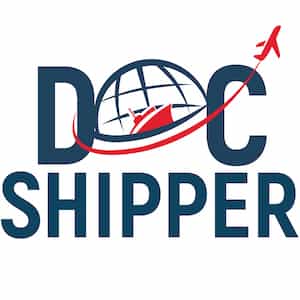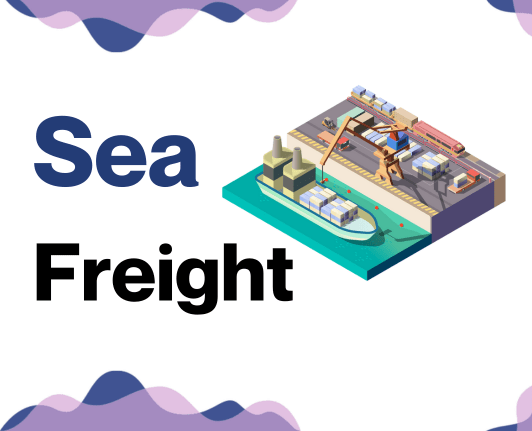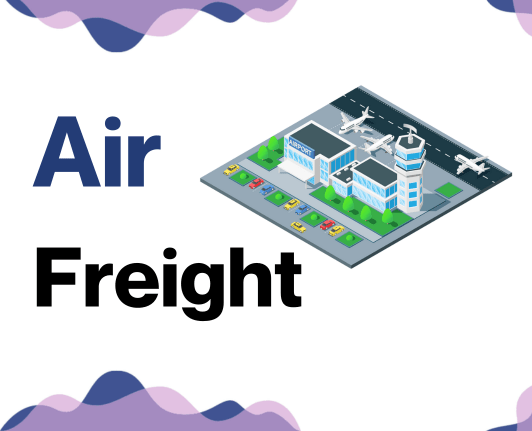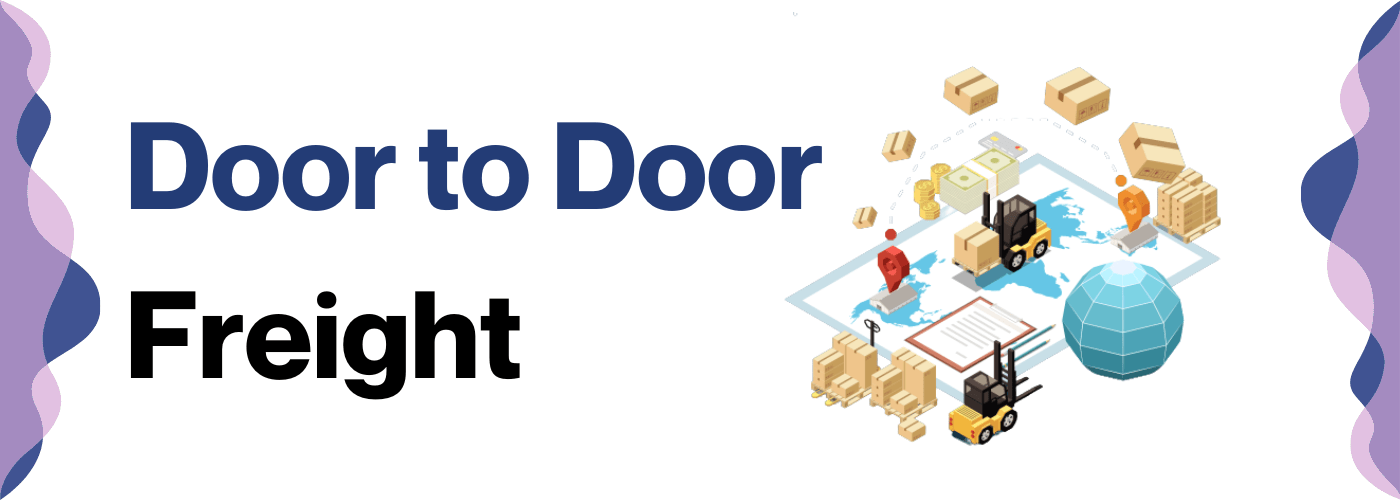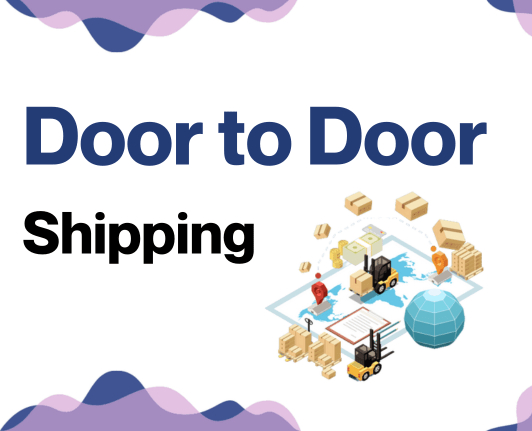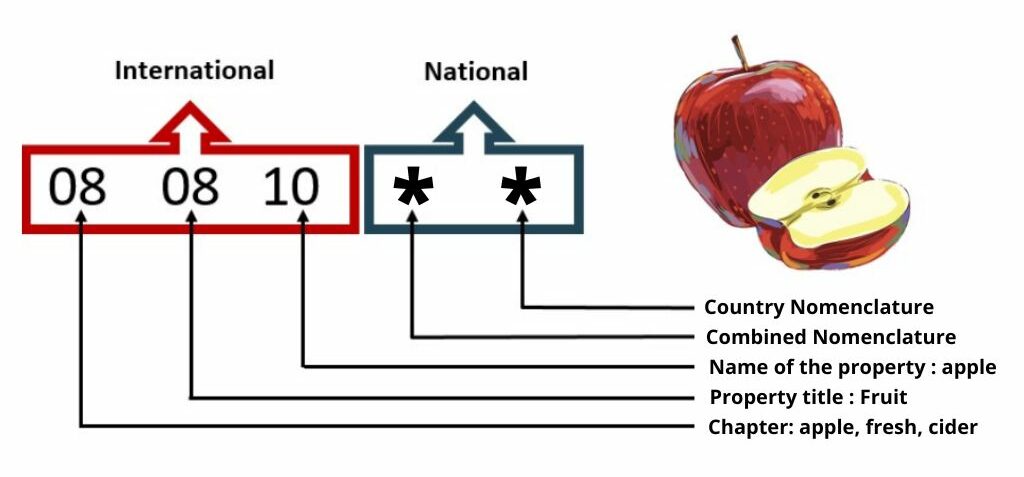Who said shipping from Malaysia to Denmark was as complicated as assembling IKEA furniture? An essential factor of doing business internationally involves understanding freight rates, transit times, and regulatory nuances. This guide provides comprehensive information for businesses looking to navigate these challenges. You'll find valuable details about various freight options (sea, air, road, and rail), the ins and outs of customs clearance, duties, and taxes pertinent to your shipment. If the process still feels overwhelming, let DocShipper handle it for you! As a reliable international freight forwarder, we turn the daunting aspects of the shipping process into success stories for businesses everywhere. Get ready to make informed shipping decisions with your next freight from Malaysia to Denmark.
Table of Contents
Which are the different modes of transportation between Malaysia and Denmark?
Selecting the prime mode of transport from Malaysia to Denmark is like threading a needle. It's all about precision and understanding the terrain. The thousands of miles separating these countries and the many nations in-between make some options impossible. Yet, it's akin to a buffet with an array of plausible choices, each with its own flavor. The key factors? Distance and geographical hurdles. Land and air usually reign supreme, but it's like picking the best paintbrush for your masterpiece. Each business has its unique needs, and those determine the perfect fit. After all, the journey makes the difference.
How can DocShipper help?
Shipping between Malaysia and Denmark? Let DocShipper simplify the process for you. Our expertise covers everything from transport organization to customs clearance, leaving no logistical stone unturned. Reach out to us for a free estimate within 24 hours. Got questions? Our consultants are just a call away. Experience hassle-free global freight forwarding today!
DocShipper Tip: Sea freight might be the best solution for you if:
- You're dealing with hefty quantities or oversized goods. Sea transport is your go-to for maximizing space without stretching your budget.
- Time sensitivity isn't a concern for your shipment. Ocean freight is known for its leisurely pace, especially when compared to the speed of air or rail.
- Your supply chain connects key international harbors. This positions you to take full advantage of a wide-reaching network of ocean trade routes.
Sea freight between Malaysia and Denmark
Ocean freight between Malaysia and Denmark serves as a key cornerstone of their thriving trade relationship, connecting factories, traders, and retailers through active cargo ports like Port Klang and Port of Esbjerg. Sea transportation is a cost-efficient method, especially for shipping high-volume goods, despite its slower pace compared to air and road transport. However, the reality of this shipping process isn’t always smooth-sailing. Many businesses have hit choppy waters due to confusing customs regulations, diverse container specifications, and unexpected costs. Think of it like attempting to assemble a jigsaw puzzle without having the final image in hand. But don't fret! We've got your compass right here and we're ready to help you chart the waters. Our focus in this part is to untangle the knots and provide you with best practices to ease your maritime journey from Malaysia to Denmark. Stick with us, and you'll avoid the common mistakes that trap many shippers. It's like having a seasoned ship captain guiding your vessel through unpredicted storms, ensuring a safe and profitable voyage.
Main shipping ports in Malaysia
Port Klang
Location and Volume: Located strategically in the district of Klang, Selangor, Port Klang is a crucial gateway for cargo movement in Malaysia with a shipping volume of over 13.2 million TEU.
Key Trading Partners and Strategic Importance: Serving as the main trade gateway to China, India, Australia, Indonesia, Europe, and the USA, this port holds international prestige by being the twelfth busiest container port worldwide.
Context for Businesses: If you're looking to tap into the booming markets of East and Southeast Asia, Port Klang can serve as a critical node in your logistics chain, given its position in a major shipping route and access to several ASEAN markets.
Penang Port
Location and Volume: Situated in the northern part of Peninsular Malaysia, Penang Port is known for handling a shipping volume of around 1.52 million TEU.
Key Trading Partners and Strategic Importance: Being the oldest and longest-established port in Malaysia, it has significant trade links with major economies like China, Singapore, Thailand, and the U.S, making it strategically important for international business.
Context for Businesses: Expanding your operations in the northern region of Malaysia? Penang Port could be instrumental in streamlining your supply chain with its multi-modal links and diverse array of cargo-handling facilities.
Johor Port
Location and Volume: Located in the southernmost part of Peninsular Malaysia, Johor Port is an integrated multi-purpose port handling around 40 millions tonnes of cargo annually.
Key Trading Partners and Strategic Importance: It trades substantially with ASEAN nations, Japan, and many European countries. Its competitive advantage lies in its Free Zone status, which allows for seamless customs clearances.
Context for Businesses: If your strategy involves penetrating ASEAN markets or leveraging free trade provisions, Johor Port's versatility and free zone advantages can significantly enhance your logistics execution.
Port of Tanjung Pelepas (PTP)
Location and Volume: PTP is situated at the confluence of the main east-west shipping lanes, and has an annual shipping volume of roughly 9.1 million TEU.
Key Trading Partners and Strategic Importance: It's a key conduit of trade flows from China, the US, Europe and other major markets. It's also the largest container port in Malaysia.
Context for Businesses: If you're a large-scale shipper striving for quicker transshipment, PTP's high efficiency, strategic location, and state-of-the-art facilities might be the optimum choice for your logistics plan.
Bintulu Port
Location and Volume: Situated along the South China Sea in the central region of Sarawak, Bintulu Port is a leading port in Malaysia dedicated to handling LNG and containerized cargo.
Key Trading Partners and Strategic Importance: It plays a vital role in Malaysia’s LNG exports to Japan, South Korea, and Taiwan - countries bearing a significant share in the global LNG market.
Context for Businesses: If your business deals in LNG or natural resources, or you're looking to penetrate Far East energy markets, Bintulu Port's dedicated facilities can provide you with a robust logistics solution.
Kuantan Port
Location and Volume: Positioned on the east coast of Peninsular Malaysia, Kuantan Port caters to goods shipping from the Asia Pacific region and beyond.
Key Trading Partners and Strategic Importance: The port is a part of China's ambitious Belt & Road Initiative, solidifying its relevance in the trade routes connecting China, Southeast Asia, and the Middle East.
Context for Businesses: If your shipping strategy involves riding on the Belt & Road wave, establishing an operation in the Asia Pacific, or accessing Middle Eastern markets, Kuantan Port's progressive development and strategic pairing with China may give your business the edge it needs.
Main shipping ports in Denmark
Port of Aarhus
Location and Volume: Located on the eastern side of Jutland peninsula, Port of Aarhus is the largest container port in Denmark with a shipping volume surpassing 756,757 TEU in 2022.
Key Trading Partners and Strategic Importance: Major trading partners include the USA, Norway, Germany, Netherlands, and Sweden, focusing on the trade of goods such as machinery, fuels, and cars. Its strategic position makes it a bridging point for North Sea to Baltic Sea trade routes.
Context for Businesses: If you're considering expanding your reach to Northern Europe, be it by land or sea, the Port of Aarhus is a key location. It boasts a broad spectrum of services, strong connections with markets around the world, and easy integration with land transport, making it handy in streamlining businesses' logistics operations.
Port of Copenhagen
Location and Volume: Located on the eastern coast of Zealand, the Port of Copenhagen prides itself on being the largest passenger port in the world with over 2 million cruise guests annually. For cargo, it recorded a shipping volume of 1.66 million TEU for 2021.
Key Trading Partners and Strategic Importance: Handling a wide range of goods, its key trading partners include Germany, Sweden, and Norway. As one of the busiest ports in the Baltic sea, it strategically connects major markets in Northern and Central Europe.
Context for Businesses: For businesses particularly in the cruise and tourism industry, utilizing the Port of Copenhagen could be key to expanding and capturing a larger customer base. Its trucking and rail links offer seamless cargo transport, benefiting businesses dealing in heavy and bulk goods.
Port of Fredericia
Location and Volume: Served by a natural deep-water harbour, the Port of Fredericia is central Denmark’s main container port, handling around 36,000 TEU per year.
Key Trading Partners and Strategic Importance: It has a broad spectrum of trading partners across the globe with a focus on chemical, oil and aggregates sectors. Its extensive rail links and easy connection to the highway system add to its strategic importance.
Context for Businesses: If you’re a business in the oil, aggregates or chemical sectors seeking to penetrate European markets, the Port of Fredericia could be the go-to solution thanks to its storage facilities, standard and specialized terminals.
Port of Aalborg
Location and Volume: Located at the Limfjord, the Port of Aalborg is an important traffic hub for Northern Jutland, with an annual capacity of up to 12,000 TEU.
Key Trading Partners and Strategic Importance: It is a focal point for handling goods like cement, coal and grain, with key trading partners including Asian countries, North America and some parts of Europe.
Context for Businesses: If you’re dealing in heavy and bulk goods looking to bolster your logistics in Northern Jutland, then Port of Aalborg, with its strategic location, modern facilities, and direct connections to the railway network, could be an advantageous choice.
Port of Esbjerg
Location and Volume: As Denmark's western gateway, the Port Esbjerg is the biggest North Sea port, catering to approximately 4.5 million tonnes of freight yearly.
Key Trading Partners and Strategic Importance: The port is an important hub for Western Europe, servicing countries including UK, Norway, and Sweden with particular emphasis on fishing industry and wind industry supplies.
Context for Businesses: If your business operates in the wind energy or fishing sectors, utilize the Port of Esbjerg to leverage its modern facilities and location that aids in easy transhipment to other European markets.
Port of Odense
Location and Volume: Located at the heart of the Danish kingdom, the Port of Odense is the largest industrial harbor of Funen, handling nearly 2 million tonnes of goods annually.
Key Trading Partners and Strategic Importance: It deals primarily in the manufacturing, timber and oil sectors with key trading partners across Europe, making it a critical nodal point for several global shipping routes.
Context for Businesses: Given the Port of Odense’s diverse industrial activity, your business, specifically if in the manufacturing or timber sectors, can have an added advantage with direct shipments and a large catchment area.
Should I choose FCL or LCL when shipping between Malaysia and Denmark?
Planning sea freight between Malaysia and Denmark? Understanding your options - Full Container Load (FCL) or Less than Container Load (LCL), also known as consolidation - is key. This choice can significantly influence your cost, delivery time, and overall shipping efficiency.
This section unravels these two options, aiding you to decipher which is best suited for your specific needs. Make your decision an informed one, giving your shipping journey the smooth sail it deserves!
LCL: Less than Container Load
Definition: LCL (Less than Container Load) shipping is a method where multiple shipments from different shippers are consolidated into a single container. This option stands out for its cost-efficiency and flexibility for lower volume shipments.
When to Use: It's generally recommended to opt for LCL when the cargo is less than 13/14/15 CBM (cubic meters). If your freight fits into this category, then LCL might be your best bet to ensure your transportation costs stay low.
Example: Suppose you're a small business exporting handmade furniture from Malaysia to Denmark. The shipment volume is just 10 CBM, and you're not in a rush for delivery. Opting for LCL shipment will not just save costs, it will also curb waste by ensuring the container is fully utilized with other shippers' goods.
Cost Implications: The beauty of LCL freight lies in its cost-effectiveness. As you're only paying for the space your cargo occupies in the container, it's a great way to keep overheads low. However, bear in mind that you might face some additional charges like Deconsolidation Fees, which are shared amongst all shippers in the container.
FCL: Full Container Load
Definition: FCL, or Full Container Load, refers to when a shipment occupies a whole container by itself. It's a type of ocean freight service that offers exclusivity and protection to your goods.
When to Use: FCL shipping becomes cost-effective for high volume loads where cargo is more than 13/14/15 CBM. It's chosen for its safety factor, as the FCL container is sealed from origin to destination, reducing the risk of damage or loss.
Example: Consider a furniture retailing business wants to ship a large batch of furniture from Malaysia to Denmark. Their shipment, occupying a 20'ft container or even a larger 40'ft container, is ideal for FCL shipping. The goods remain sealed and secure during transit, ensuring their quality on arrival.
Cost Implications: Though FCL shipping quote can be more than LCL, it's usually cheaper per unit as volume increases. The shipping cost is divided over a larger number of items, reducing the cost per item. However, the size and weight of the container (20' or 40'ft) could also affect terminal handling charges and other fees.
Unlock hassle-free shipping
At DocShipper, simplifying your shipping experience is our priority. Don't let the complexities of cargo shipping bog your business down. Our ocean freight professionals take various factors into account like costs, shipping timings, and cargo size to deliver tailor-fit solutions for you. So whether you're deciding on shipping by consolidation or a full container between Malaysia and Denmark, we've got you covered. Ready for a smoother shipping adventure? Contact us now for a free estimation.
How long does sea freight take between Malaysia and Denmark?
Shipping goods by sea freight between Malaysia and Denmark often takes an average of 30 - 50 days. Keep in mind that this can vary based upon several factors including the specific port of departure and arrival, as well as the weight and nature of the goods being transported. To understand the exact cost and time for your shipment, it is recommended to reach out to freight forwarders like DocShipper to provide a tailored quote based on your needs.
Here's a general breakdown of average transit times between various ports in both countries:
| From (Malaysia Ports) | To (Denmark Ports) | Average Transit Time (Days) |
|---|---|---|
| Port Klang | Port of Copenhagen |
32 days
|
| Port Tanjung Pelepas | Port of Aarhus | 28 days |
| Port of Pasir Gudang | Port of Copenhagen | 30 days |
| Port of Tanjung Bruas | Port of Aarhus | 30 days |
How much does it cost to ship a container between Malaysia and Denmark?
Understanding the shipping cost between Malaysia and Denmark can seem complex due to myriad influencing factors. Ocean freight rates, for instance, are not fixed, and may vary depending on the Point of Loading, Point of Destination, choice of carrier, the nature of your goods, and fluctuating market conditions. Hence, quoting an exact figure for container shipping rates per CBM is challenging. However, rest assured that our team of shipping specialists is here to navigate you through this complexity. We provide personalized quotes on a case-by-case basis to ensure you get the best shipping solutions tailored to your unique needs.
Special transportation services
Out of Gauge (OOG) Container
Definition: An OOG container is specifically designed for out of gauge cargo that exceeds standard dimensions of regular shipping containers.
Suitable for: Machinery parts, construction materials, maritime equipment or any oversized or over-weight items that cannot fit into a standard container.
Examples: Mast sections of a crane, large pipes, manufacturing equipment.
Why it might be the best choice for you: Because it allows you to ship oversized items smoothly, securely and cost-effectively, without the need to dismantle them into smaller components.
Break Bulk
Definition: Break bulk refers to loose cargo load that is loaded individually onto a ship, not in a container or trailer.
Suitable for: Energy equipment, heavy machinery, construction materials, transformers or other large dimensional cargo.
Examples: Generators, turbines, heavy construction equipment.
Why it might be the best choice for you: If you have extremely large or heavy items that would exceed the weight or dimensional restrictions of containers, this method can ensure safe and efficient shipment.
Dry Bulk
Definition: Dry bulk is a shipping method typically used for commodities in large quantities, transported unpackaged in large quantities.
Suitable for: Grain, coal, cement, ores, powders, and other similar goods.
Examples: Mountainous amount of wheat, trainload of coal, tons of cement.
Why it might be the best choice for you: If your business deals in large quantities of unpackaged dry goods, the cost-effectiveness and ease of handling of Dry bulk shipping are unmatched.
Roll-on/Roll-off (Ro-Ro)
Definition: In Ro-Ro shipping, vehicles are driven onto a ro-ro vessel and shipped to their destination port.
Suitable for: Cars, trucks, trailers, motorhomes, and heavy plant machinery.
Examples: Shipment of new or used cars, moving heavy construction machinery.
Why it might be the best choice for you: If you're transporting wheeled cargo, Ro-Ro is an easy and safe option. The rollout process reduces chance of damage, ensuring your vehicles arrive in pristine condition.
Reefer Containers
Definition: Reefer containers are refrigerated containers used for the transport of perishable goods.
Suitable for: Foodstuff, pharmaceuticals, and other temperature-sensitive cargo.
Examples: Fruits, vegetables, meat, fish, dairy products and medicine.
Why it might be the best choice for you: If your business revolves around perishable goods, Reefer Containers ensure your products will reach their destination fresh and unspoiled.
Naturally, the most suitable method for your business depends on the specifics of the goods you're shipping but whatever your needs are, DocShipper is here to help you navigate your shipping options between Malaysia and Denmark. Feel free to contact us for a free shipping quote in less than 24 hours.
DocShipper Tip: Air freight might be the best solution for you if:
- You're pressed for time or facing a non-negotiable deadline. Air freight delivers unparalleled speed when it comes to transit times.
- Your shipment is modest in size, falling under 2 CBM. Air freight is particularly well-suited for these smaller consignments.
- Your supply chain includes destinations that are off the beaten maritime or rail paths. Air freight gives you access to a comprehensive global airport network.
Air freight between Malaysia and Denmark
When you're racing against the clock to get high-value products from Malaysia to Denmark, air freight reigns supreme - fast, reliable, and perfect for small, precious cargo. Consider electronics - imagine needing to rush latest-gen smartphones from Kuala Lumpur to Copenhagen. Time-saving and security attributes of air cargo make it ideal for such cases, combining unbeatable speed with protective handling of your items.
However, unwary shippers often trip over details, leading to costly missteps. Take the weight of your shipment, for example. Shipping air freight isn't like checking luggage for a holiday flight - you're dealing with 'volumetric weight', a unique calculation where size can impact cost as much as mass. Not understanding these industry specifics can be like ordering a meal without checking the price - leading to an unpleasant surprise when the bill arrives.
Air Cargo vs Express Air Freight: How should I ship?
Reassessing your shipping strategy between Malaysia and Denmark? The key lies in understanding your options: picture air cargo as booking a seat on a commercial flight for your goods, while express air freight is like chartering a private jet. Let's delve into the pros and cons of each to find the perfect match for your specific business needs and timelines.
Should I choose Air Cargo between Malaysia and Denmark?
Air cargo is a reliable and cost-effective choice for shipping goods from Malaysia to Denmark. Prominent airlines involved in this route include Malaysia Airlines and Scandinavian Airlines, which are known for their punctual schedules. However, be prepared for longer transit times. This mode becomes more attractive for loads of 100/150 kg (220/330 lbs) upwards. Considering your budgetary needs, air freight might be your preferred choice. Check their websites: Malaysia Airlines and Scandinavian Airlines for more details.
Should I choose Express Air Freight between Malaysia and Denmark?
Looking to ship less than 1 CBM or 100/150 kg from Malaysia to Denmark rapidly? Consider Express Air Freight, a service that uses cargo planes with no passengers, ensuring speedy shipment. This versatility makes it an ideal choice for smaller, lightweight packages. Major courier firms like FedEx, UPS, and DHL hold the lead in this market. Opting for Express Air Freight offers you a swift, reliable solution, perfect for time-critical, less bulky cargo. The choice is especially beneficial if your freight is of high-value, requiring a seamless, secure, and speedy delivery.
Main international airports in Malaysia
Kuala Lumpur International Airport
Cargo Volume: Kuala Lumpur International Airport, or KLIA, consistently ranks as one of Asia's busiest in terms of cargo volume, moving more than 1 million tons annually.
Key Trading Partners: Primarily servicing the Southeast Asia region, the airport has strong ties with China, Singapore, and Japan, followed by the USA and India.
Strategic Importance: As Malaysia's main international airport, KLIA is a critical aviation hub in Southeast Asia. It's ideally situated for connections across Asia, Oceania, and beyond.
Notable Features: With dedicated cargo and logistics facilities, KLIA can handle all kinds of cargo. Modern infrastructure and technology facilitate efficient processing and transportation of goods.
For Your Business: With high cargo volume and extensive global connections, KLIA is well-suited for shipping high-value or time-sensitive products to or from the Asia-Pacific region.
Penang International Airport
Cargo Volume: Penang International Airport handles over 150,000 tons of cargo annually, with high growth expected due to demand in the electronics sector.
Key Trading Partners: The airport's primary trade partners are within the ASEAN region, China, and Japan, focusing on shipments of electronic components and medical equipment.
Strategic Importance: As the third busiest airport in Malaysia, Penang International plays a crucial role in the northern region's industrial and economic development.
Notable Features: The airport is close to the Bayan Lepas Free Industrial Zone, which houses many multinational tech firms. Its proximity to these businesses provides an advantage for logistics.
For Your Business: If your enterprise deals in electronics or medical equipment, using Penang International Airport for your logistics needs could enable convenient and prompt deliveries.
Johor Bahru Senai International Airport
Cargo Volume: Senai International Airport handles about 10,000 tons of cargo annually, maintaining a steady growth trajectory.
Key Trading Partners: Key trading partners include Southeast Asian countries, East Asia, and the Middle East. The most handled goods are high-technology, electronics, and machinery parts.
Strategic Importance: Located close to Singapore, Senai International serves as a key logistics hub for Southern Malaysia and Singapore's hinterland, enhancing trade within ASEAN.
Notable Features: A well-integrated cargo village offers a unique one-stop solution for all logistics needs. This includes handling, warehousing, and distribution services.
For Your Business: If you aim to tap into Singapore's market or have frequent volume-based shipments to ASEAN and East Asia, then Senai International could be a sturdy point in your logistics chain.
Sultan Abdul Aziz Shah Airport
Cargo Volume: Known as Subang Skypark, it handles an annual cargo volume of about 23,000 tons, specializing particularly in domestic cargo services.
Key Trading Partners: The airport mainly caters to the domestic Malaysian market, although it has potential connections to ASEAN and the Asia-Pacific regions.
Strategic Importance: Subang Skypark is conveniently located near Kuala Lumpur and acts as an important gateway for bulk domestic shipments.
Notable Features: As Malaysia's primary hub for turboprop flights, it offers rapid domestic connectivity, thus enabling quick turnaround times for nationwide shipments.
For Your Business: If you require speedy and reliable domestic shipping solutions within Malaysia, Sultan Abdul Aziz Shah Airport's extensive coverage can be an essential part of your operations.
Kota Kinabalu International Airport
Cargo Volume: Among Borneo's busiest airports, it deals with upwards of 30,000 tons of cargo every year, serving both domestic and international freight needs.
Key Trading Partners: The key trading partners are China, South Korea, Japan, and Australia. Seafood, particularly live seafood, forms a significant portion of the exports.
Strategic Importance: The airport forms an essential link between Borneo Island and the rest of Asia. It allows quick and easy transportation of goods to nearby international markets.
Notable Features: Its advanced cargo management systems streamline the processing of a diverse range of cargo, including perishable items like seafood.
For Your Business: If your business specializes in seafood or perishable goods, leveraging Kota Kinabalu International Airport's strategic location and facilities could enhance your customer experience with expedited delivery times.
Main international airports in Denmark
Copenhagen Airport
Cargo Volume: Annually, Copenhagen Airport handles over 400,000 tonnes of cargo.
Key Trading Partners: Major trade partners include Germany, Sweden, UK, and China.
Strategic Importance: Serving as the largest cargo hub in the Nordics, Copenhagen Airport is strategically positioned to help businesses reach all major European markets.
Notable Features: The airport features world-class cargo facilities, temperature-controlled warehouses, and a dedicated crew looking after all the cargo handling.
For Your Business: With extensive flight connections and sophisticated storage facilities, Copenhagen airport could connect your business to your key markets faster and more efficiently.
Billund Airport
Cargo Volume: The annual cargo volume at this airport is estimated to be 40,000 tonnes.
Key Trading Partners: The main trading partners include Norway, Great Britain, and Belgium.
Strategic Importance: The airport's strategic central location within the Jutland Peninsula enables fast road transport to results in quick road-transport delivery times to Denmark, Sweden, and Germany.
Notable Features: The airport features express cargo handling, a dedicated crew for cargo handling, and 24x7 operational hours.
For Your Business: The airport's strategic location and round-the-clock operations can provide your business with efficient and flexible cargo transport solutions, ensuring timely deliveries.
Aarhus Airport
Cargo Volume: Aarhus Airport handles about 40,000 tonnes of cargo every year.
Key Trading Partners: Main trade involves Norway, Sweden, Germany, and Netherlands.
Strategic Importance: The airport is ideally situated to serve the Eastern Jutland region, and also provides good links to rest of Denmark, Sweden, and Norway.
Notable Features: Features efficient cargo handling facilities, fast cargo services, and 24/7 availability.
For Your Business: The airport's extensive cargo handling facilities and its strategic location can create cost-effective solutions for your business's cargo needs.
Roskilde Airport
Cargo Volume: This airport handles approximately 8,000 tonnes of cargo annually.
Key Trading Partners: Major trade partners include Germany, Sweden, and Norway.
Strategic Importance: While it largely serves cargo airlines, it’s ideally located for serving the greater Copenhagen area.
Notable Features: The airport offers a dedicated cargo terminal and rapid handling services.
For Your Business: If your business focuses on smaller, more manageable shipments, Roskilde Airport could provide rapid handling and ease of access to the major markets.
Midtjyllands Airport
Cargo Volume: Midtjyllands Airport sees around 6,000 tonnes of cargo per year.
Key Trading Partners: Major partners primarily cover Northern European countries.
Strategic Importance: The airport is strategically located midway between Aarhus and Aalborg, making it an ideal location for cargo that requires distribution within Denmark.
Notable Features: The airport features simplistic cargo-handling processes and connectivity to nearby highways for quick ground transportation.
For Your Business: If your shipping strategy includes reaching to the Northern Denmark, then using this airport can lead to significant cost and time savings.
How long does air freight take between Malaysia and Denmark?
Typically, air freight from Malaysia to Denmark can take approximately 6-8 days. However, it's crucial to note that transit times can vary depending largely on the specific departure and arrival airports, the weight of your cargo, as well as the type of goods you intend to ship. To get precise timings tailored to your specific needs, we recommend consulting with a reputable freight forwarder like DocShipper.
How much does it cost to ship a parcel between Malaysia and Denmark with air freight?
Air freight costs from Malaysia to Denmark fluctuate vastly, averaging around $4-$8 per kg, owing to factors like distance from departure and destination airports, parcel dimensions, weight, and the nature of goods. Hence, an exact price estimate is challenging. Rest assured, our dedicated team tailors each quote individually, considering your specific needs and budget. Contact us for a free, personalized quote within 24 hours.
What is the difference between volumetric and gross weight?
First, let's unwrap 'gross weight' and 'volumetric weight'. Think of gross weight as the actual weight of the parcel, including packaging. It's assessed in kilograms (or lbs., once converted). On the other hand, volumetric weight represents the physical space your package may occupy on an aircraft, balanced out with the actual weight.
Now, how do we calculate these in air cargo or express air freight services? For gross weight, it's simple. You just weigh your package. Let's say it's a 50 kg (110 lbs) box.
The volumetric weight involves some maths. Here's the formula for air cargo: Length (cm) x Width (cm) x Height (cm) / 6000. For express air freight, it's the same but '/ 5000'. Let's consider your package is 60cm x 50cm x 40cm. For air cargo, the volumetric weight would be 20 kg (44 lbs), and for express air freight, it's 24kg (52.91 lbs).
So, why are these calculations important? Freight charge determination hangs on them. Carriers charge based on the higher of the gross and volumetric weight to maximize efficiency and earn profit. So, do calculate both before shipping!
DocShipper tip: Door to Door might be the best solution for you if:
- You value convenience and want a seamless shipping process, as door-to-door takes care of every step from pickup to delivery.
- You prefer a single point of contact, as door-to-door services typically provide a dedicated agent to handle all aspects of the shipment.
- You want to minimize the handling of your goods, reducing the risk of damage or loss, as door-to-door minimizes transitions between different modes of transport.
Door to door between Malaysia and Denmark
When you need a hands-off, stress-free solution for shipping between Malaysia and Denmark, international door-to-door service has got you covered. Simplifying logistics, it ensures a seamless transport from one doorstep to another — quite a game-changer! With its potential for enhanced efficiency and reduced downtime, it's time for us to dive into this reliable, hassle-free shipping method.
Overview – Door to Door
Shipping goods from Malaysia to Denmark? Door-to-door service could be your ticket to hassle-free logistics. Meet your demands swiftly using this sought-after solution, popular among DocShipper's clients. While shipping poses potential challenges like complex customs and prolonged transit times, door-to-door service counters this by handling every task, from pick-up to delivery. The downside? It may be pricier than traditional methods. But think about the freedom from administrative burdens and delays. Makes a difference, doesn't it? Choose door-to-door for a stress-free shipping experience.
Why should I use a Door to Door service between Malaysia and Denmark?
Ever shipped a package and wished you had a fairy godfreight to handle it all? Door to Door service is the closest you'll get! Here are five compelling reasons to choose this service for your Malaysia-Denmark transports.
1. Say 'Goodbye' to Logistics Stress: With goods pickup from your location, and delivery to the exact destination, you don't need a PhD in logistics. Let the experts handle the complexities of international freight forwarding. All you do is wait for the delivery confirmation.
2. Timely Delivery: Urgent shipment? No worries! With optimized routes and express options, your cargo will arrive right on schedule. A must-have for time-critical goods!
3. Specialized Care: Fragile, heavy, or complex cargo? Door to Door service offers specialized handling to ensure your goods reach in pristine condition. That antique chandelier or industrial machinery? It's safe!
4. Conquering Customs: Seamless customs clearance is included in the service. No more headaches over import duties or other legal intricacies. Trust in the smooth passage of your goods, from customs in Malaysia to clearance at Danish ports.
5. Ultimate Convenience: From pickup to trucking to the final destination, every step is covered. You can focus on your business, your market strategies, or even finish that cup of coffee, knowing your shipment is well taken care of.
So, why not sit back, relax, and let the Door to Door service take your freight forwarding experience to a whole new level of convenience and reliability?
DocShipper – Door to Door specialist between Malaysia and Denmark
Navigate the world of shipping with DocShipper. Our unmatched prowess in the field ensures a smooth, door-to-door transit from Malaysia to Denmark. Offering a complete A to Z, stress-free service - we manage packing, transportation, customs, across all shipment methods. A dedicated Account Executive is on standby for all your needs. Request a free estimate within 24 hours or engage our consultants at your convenience. All it takes is one call, and we do the rest.
Customs clearance in Denmark for goods imported from Malaysia
Customs clearance is a critical, yet complex process of transitioning your goods through customs to enter Denmark from Malaysia. Here, the unpredictable labyrinth of fees, charges, and potential hitches can easily throw your logistics off course. Understanding customs duties, taxes, quotas, and licenses is critical, as any mix-ups could result in your shipment getting stuck in the customs pipeline. Don't fret – our comprehensive guide will explore these intricacies in the sections below. Speaking of smooth transits, DocShipper supports the whole process for all types of goods everywhere. Need an estimate for your project? Just provide the origin of your goods, their value, and the HS Code to our team. These are the key details we need to assist you efficiently. Let's navigate this customs landscape together.
How to calculate duties & taxes when importing from Malaysia to Denmark?
As an international shipper, estimating duties and taxes is one of the essential steps in the importing process. It's not as complex as you might think, but it does require a few key pieces of information about your shipment to get started. To assess your customs duties, you'll primarily need to know five things: the country of origin for your goods, the Harmonized System (HS) Code of your products, the customs value, the Applicable Tariff Rate, and any other applicable taxes and fees.
Now, you might be wondering where to start? It’s simple. The first stop on your journey to calculating your import duties is determining the country where the goods were manufactured or produced. Understanding the manufacturing origin of your imports is crucial, as tariff rates and trade agreements differ depending on the country of origin. There you have it - your first stepping stone towards bringing your imports from Malaysia to Denmark. As you move forward, remember each piece of data is a critical puzzle piece in forming the bigger picture - garnering a clearer view of your expected duties and taxes.
Step 1 - Identify the Country of Origin
First and foremost, knowing your goods' origin is imperative for five key reasons. One, it can affect tariffs due to trade agreements. For instance, Malaysia and Denmark both are part of the World Trade Organization, and specific tariff concessions may apply. Two, verifies if any import restrictions are in place. Some items from Malaysia may be restricted or prohibited due to Danish regulations.
Three, helps establish required documentation. Knowing where an item arrives from can set the document prerequisites for import. Four, it can influence customs procedures. Country of origin directly affects how customs handles and processes your goods. Last but not least, five, it dictates your commodity's HS code, fundamental to settle duties and taxes.
Here's a practical tip. Unfamiliar with import restrictions? Check the Danish Customs website or consult customs experts. They can guide you through the maze of restrictions and help avoid costly mistakes. Always remember, verifying the country of origin is not just a formality, it's a crucial step in speeding up the import process.
Step 2 - Find the HS Code of your product
The Harmonized System (HS) Code is a standardized system of names and numbers to classify traded products globally. This international tool, often just called the HS Code, essentially helps customs identify the nature of goods being imported or exported, which then allows them to apply the correct taxes and duties.
A simple way to find out the HS code of your product is to ask your supplier. They're typically well-versed with the products they're handling and the associated regulations, making this route quite straightforward.
However, if this option isn't available to you, fear not. We can guide you through an easy step-by-step process to figure it out yourself. Here's how:
1. Visit this online Harmonized Tariff Schedule tool.
2. Type the name of your product into the search bar.
3. After your search, refer to the 'Heading/Subheading' column, where you'll find your product's HS code.
A word of warning: accuracy is crucial when determining your HS Code. An incorrect code can lead to complications, including potential delays in the shipping process, and sometimes even fines. So, take care and double-check everything.
And just to consolidate your understanding, here's an infographic showing you how to read an HS code. Appreciating the intricacies of this code will only benefit your shipping experience.
Step 3 - Calculate the Customs Value
Delving into the world of customs, you may come face-to-face with terms like 'customs value'. Don't fret! It's simply a valuation method used by customs authorities, and no, it isn't the same as your product's commercial value.
Think of customs value as the total amount that customs bases their fees on. In Denmark (and most places), it's calculated through the CIF method - short for Cost, Insurance, and Freight. This is where the cost of your goods (say $1000), international shipping (perhaps another $200), and insurance (let's assume $50) come together.
The magic formula would look like this: $1000 (Cost of Goods) + $200 (Freight) + $50 (Insurance) = $1250 USD. This is your goods' customs value. Armed with this knowledge, conquering customs complexities just got a tad easier!
Step 4 - Figure out the applicable Import Tariff
An import tariff is a tax imposed by a country on goods imported from abroad. For Denmark, being part of the European Union, it adheres to the Common Customs Tariff (CCT). The tariff applicable to your goods can be retrieved using a tool known as the TARIC System - European Customs.
To identify the appropriate tariff, follow these steps:
1. Go to the TARIC Consultation Tool.
2. Enter the Harmonized System (HS) code of your product and Malaysia as the country of origin.
For instance, if you're importing plastic tableware (HS code 392410) from Malaysia, the TARIC Consultation Tool may indicate a tariff rate of 6.5%.
Now, let's calculate the import duties. Assume the Cost, Insurance, and Freight (CIF) value of your consignment is USD 10,000. The import duties will be calculated as follows:
Import Duties = (CIF value x tariff rate) / 100
= (USD 10,000 x 6.5) / 100
= USD 650
This means, on importing plastic tableware worth USD 10,000 from Malaysia, you're required to pay USD 650 in import duties in Denmark.
Remember, understanding your tariffs can save your business from unexpected costs and delays, keeping you competitive and reliable.
Step 5 - Consider other Import Duties and Taxes
Beyond the standard tariff rate, your import expenses may also include additional duties and taxes depending on your product and its country of origin. For instance, if you're importing alcohol or tobacco from Malaysia to Denmark, you may have to pay excise duties, which are taxes levied for certain types of goods.
In some cases, anti-dumping taxes are also applied when a product is sold more cheaply in the foreign market than its actual cost, to protect local industry. While these taxes vary, let's say for a hypothetical example, the rate is 5% (check updated rates as this is just an example).
Most importantly, remember VAT. In Denmark, the standard rate is 25% on the CIF value (cost of the goods + insurance + freight) plus all import duties paid. So if your CIF value is $1000, and you've paid $200 in duties, your VAT would be $300 ($1200*25%).
These extra costs can significantly impact your end pricing, so it's essential to account for them in your financial planning. As always, it's recommended to consult with a customs expert to ensure you're fully compliant with all regulations.
Step 6 - Calculate the Customs Duties
Navigating customs duties in Denmark when importing goods from Malaysia can be a complex task. The crux of this lies in calculating the duties payable accurately. Here's a quick formula: Customs duties = Customs value of the goods × Duty rate.
Consider three scenarios:
1. If you're importing textiles with a customs value of $10,000 and a duty rate of 12%, the customs duty is $1,200 - no fuss with VAT here.
2. Say you're shipping footwear worth $15,000 and a duty rate of 16%. You'd also account for Denmark's 25% VAT: ((customs value + customs duties) × VAT rate), calculating to a total sum of $4,300.
3. Importing furniture worth $20,000 with a 10% duty rate, 25% VAT, 6% anti-dumping taxes, and 2% excise duty, runs a steeper cost. You'd sum your duties, anti-dumping tax and excise duty to the customs value before applying VAT, equalling $9,000.
Avoid overpaying or falling into legal pitfalls by opting for DocShipper's customs clearance services. Committed to ensuring a seamless clearance process, our team can handle each step of your import duties calculation and more, regardless of your global location. Unravel your potential savings and contact us for a free quote in under 24 hours: with DocShipper, customs clearance is a breeze.
Does DocShipper charge customs fees?
As a customs broker in Malaysia and Denmark, DocShipper doesn't charge customs duties - that goes directly to the government. However, customs clearance fees are required. Here's the deal: say you're shipping a pallet of electronics. We'd handle the complex customs work, issue a fee for our service, but the duties levied by the government are on you. Don't worry, we'll give you official customs docs to see you're only paying what’s actually charged by the government. It's all about transparency with us. You focus on your business, we'll take care of the logistics.
Contact Details for Customs Authorities
Malaysia Customs
Official name: Royal Malaysian Customs Department
Official website: http://www.customs.gov.my/en/home
Denmark Customs
Official name: The Danish Customs Agency (Toldstyrelsen)
Official website: https://www.toldst.dk/
Required documents for customs clearance
Don't let paperwork deter your global ambitions! Understanding the four critical documents, namely the Bill of Lading, Packing List, Certificate of Origin, and Documents of Conformity (CE Standard) can streamline your customs clearance, dodge delays, and keep your shipment sailing smoothly. We've got your back, let's embark on this journey together!
Bill of Lading
A Bill of Lading (BoL) is crucial to your shipping journey from Malaysia to Denmark. Think of it as your golden ticket – it proves you're the rightful owner of the cargo and holds all the details about your shipment – weight, type, quantity, everything! Now, let's talk about an even better version, the telex release. It's the electronic counterpart of a BoL, which accelerates the process because you don't have to wait for a paper document to reach Denmark! If you're using air freight, the Air Waybill (AWB) plays a similar role. Fill in this essential paperwork correctly to smooth your cargo's way through customs. With these documents in order, customs clearance will be a breeze and your business can sail smoothly through the logistics seas!
Packing List
When shipping goods from Malaysia to Denmark, one document it's really essential not to overlook is your Packing List. It's like a detailed inventory, outlining every single item included in the shipment. Everything from quantities, descriptions, to specific weights and measurements needs to be spot on. Picture this, let's say you're shipping artisanal batik fabrics; your packing list should lay out the exact number of bolts, individual weight, and fabric description. Ocean or air freight - it doesn't make a difference, as either method of shipping requires this document. The key takeaway here is accuracy. A mismatch can cause major hiccups during customs clearance. After all, customs officials rely on this document to verify the goods. So, you see, your Packing List is more than just a list - it's crucial for a seamless shipping process between Malaysia and Denmark.
Commercial Invoice
Delivering goods from Malaysia to Denmark? Your Commercial Invoice is vital for swift customs clearance. It's your financial proof-of-transaction and lack of correct details can result in delays. Ensure you include specifics: names of seller and buyer, detailed description of the goods, delivery terms, and total amount payable. Here's a tip - align this with your shipping documents for a hassle-free process. Encountering mismatches? It's common for first-timers, consult an experienced forwarder to ensure smooth sailing. Remember, customs officials value accuracy and consistency in paperwork. Your detailed Commercial Invoice is their assurance that your cargo meets all trade legislations. You're good to go!
Certificate of Origin
Getting goods from Malaysia to Denmark can feel like a maze, but the Certificate of Origin (CO) can smoothen your journey. This document proves where your goods were manufactured and is crucial for customs clearance on both ends. Let's say you're shipping computer parts made in Kuala Lumpur, your CO verifies this fact to Danish customs. Why does it matter? Well, it could benefit you in terms of customs duty rates, thanks to the Malaysia-European Union Free Trade Agreement. So remember, properly mentioning the country of manufacture on your CO is non-negotiable to streamline your shipping and potentially save on costs. When in doubt, consult your freight forwarder to aid with these minute but vital details.
Certificate of Conformity (CE standard)
If you're shipping goods from Malaysia to Denmark, a key document you’ll need is the Certificate of Conformity (CoC) to CE standards. This isn't just a quality assurance stamp; it’s a regulatory requirement in the European market that your good complies with the safety, health, and environmental protection standards. Unlike the US which has different standards like the FCC mark or UL listing, the CE mark empowers you to sell your product across European markets, including Denmark. But remember, it's your responsibility as a manufacturer or distributor to ensure your products meet these standards before putting that CE mark on. Misuse can lead to severe penalties. Keep in mind, too, that Brexit has changed things slightly; for shipping to the UK, you'll now need the new UKCA marking. So having your documentation in order can help you prevent costly delays at the customs and smoothly get your product into the hands of your customers.
Your EORI number (Economic Operator Registration Identification)
If you're preparing to ship goods between Malaysia and Denmark, you must secure an EORI Number, a key component in streamlining the customs clearance process. Stands for Economic Operator Registration Identification, it acts as your unique identifier in dealing with customs authorities within European Union, and yes, Denmark is part of EU. Imagine your EORI as a VIP pass, allowing smoother transitions of your freight, tracking your imports and exports within EU's borders. Registering may seem like a chore, but it's critical for businesses, ensuring your goods get from Malaysia to Denmark without a hitch. So, don't skip this important step - embrace it as a necessary phase of your shipping success!
Get Started with DocShipper
Navigating customs clearance for shipments from Malaysia to Denmark? Interruptions and missteps can add unnecessary delays and costs. No need for constant worry! At DocShipper, we've got you covered. Our experienced team handles every step, leaving you stress-free. For a smooth, hassle-free customs clearance, contact us. Secure your free quote in less than 24 hours and streamline your shipping process today!
Prohibited and Restricted items when importing into Denmark
Shipping goods into Denmark? It can be tricky with some items facing restrictions or even outright prohibitions. Avoid mishaps by staying ahead of these challenges, enhancing your understanding, and maintaining a smooth import process. Let's delve into the specifics, shall we?
Restricted Products
Here's the list of products that are restricted for shipping in Denmark, and details on acquiring the necessary licenses or permits:
1. Animals and Animal Products: To ship these, you have to apply for a permit from the Danish Veterinary and Food Administration. Visit their website here.
2. Weapons and Ammunition: An authorization from Danish Police is mandatory for shipping firearms and ammunition.
3. Medicines and Health Equipment: Approval from the Danish Medicines Agency is needed to ship medicines and health equipment.
4. Pyrotechnic and Explosive Substances: You need a license issued by the Danish Safety Technology Authority.
5. Precious Metals and Stones: You'd need to register with The Danish Business Authority if you're shipping precious metals and stones.
6. Tobacco and Alcohol: If you plan on shipping tobacco and alcohol, you have to receive a license from the Danish Tax Agency.
Always remember, while the above links direct you to the responsible entity, it's crucial to confirm these details before you start the shipping process to avoid any complications and delays.
Prohibited products
- Narcotics and illegal drugs: These include substances like marijuana, cocaine, heroin, and other types of illegal drugs. Prescription medications without prescription or in high amounts can also be considered narcotics.
- Endangered species and products derived from them: This includes anything made from ivory, tortoiseshell, coral, reptile skin, and wood from the rainforests.
- Counterfeit products: This includes counterfeit money and goods, as well as pirated materials.
- Offensive materials: Items containing obscene, offensive or racist materials such as pornography, items promoting hate crimes or terrorism are not allowed.
- Weapons: Certain types of weapons, especially firearms, are highly controlled. Without the correct paperwork and permissions, bringing weapons can lead to severe punishment.
- Explosive materials: These include firecrackers, fireworks, or pyrotechnical products.
- Organic solvents: This includes certain chemicals, pesticides or substances that can damage human health or the environment.
- Certain animal products: Especially raw meat and dairy products originating from non-EU countries can be prohibited due to concerns about disease.
- Tobacco products: Although not entirely prohibited, importing tobacco products in large amounts for resale might be restricted due to tax laws.
Are there any trade agreements between Malaysia and Denmark
Indeed, Malaysia and Denmark enjoy flourishing trade relations largely due to the Free Trade Agreement between Malaysia and the EU, of which Denmark is a part. This agreement facilitates trade by reducing tariffs, making it more cost-effective for you to ship goods between the two countries. Additionally, ongoing discussions surrounding an ASEAN-EU Comprehensive Air Transport Agreement (CATA) could open more opportunities for air freight in the near future. Always keep a pulse on these developments as it may influence your shipping decisions.
Malaysia - Denmark trade and economic relationship
A robust economic bond exists between Denmark and Malaysia, founded on centuries of engaging trade. With Malaysia's economic prowess in Southeast Asia and Denmark's in Europe, they have mutually benefited from this partnership. Key sectors include health, greentech, and machinery with mutual investments steadily rising, fostering job growth and innovation. In 2019, Danish exports to Malaysia constituted electronics and machinery, worth MYR 950 million, while Malaysian exports to Denmark, mainly palm oil and electronics, were valued at MYR Malaysia exported RM455.7 billion worth of E&E products. Denmark ranks as Malaysia's 15th largest EU trading partner while Malaysia ranks as Denmark's 2nd largest in ASEAN. This robust trade relationship signifies an ongoing reciprocal economic exchange.
Your Next Step with DocShipper
Sorting out the logistics of shipping between Malaysia and Denmark can be complex! Dodging hidden costs, handling paperwork and understanding local customs – it’s enough to baffle even experienced shippers. Don't get overwhelmed! Reach out to DocShipper, your expert in international shipping. We'll simplify the process, saving you time and money. Contact us now - let’s turn shipping confusion into straightforward sailing.
Additional logistics services
Discover how DocShipper can streamline your supply chain beyond just shipping and customs, from warehousing to distribution. We're your one-stop-shop for comprehensive logistics solutions. Let's take your business to the next level!
Warehousing and storage
Finding a dependable warehousing partner can feel like an uphill battle. If your shipment includes temperature-sensitive goods, this search becomes even more critical. Reliable and tailored warehousing is key to ensure your products reach Denmark in prime condition from Malaysia. Learn more about our controlled environment units and top-tier logistics on the dedicated page: Warehousing
Packaging and repackaging
Ensuring your goods arrives safely from Malaysia to Denmark is crucial, and it all starts with robust packaging. Whether it's electronics or textiles, partnering with a reputable agent can be your safety net against damage. Picture this: fragile ceramic pottery, bubble-wrapped meticulously, boxed, and palletized for a damage-free voyage. See how we simplify these complexities and more on our dedicated page: Freight Packaging
Cargo insurance
While fire insurance protects against loss due to fire, Cargo Insurance is your shield against transport hazards, e.g., damages during loading or due to rough seas. A well-considered investment, it minimizes unexpected costs. For instance, if your vessel encounters a storm, your consignment won't be a total loss! Prevention is key, and insurance is your precaution. More information is available on our dedicated page: Cargo Insurance
Supplier Management (Sourcing)
Struggling with overseas sourcing? Worry no more. Let DocShipper discover the right suppliers in Asia, East Europe and beyond for you. We handle the heavy-lifting in procurement and break down the language barrier, making global sourcing a breeze. Witness the simplicity of procuring overseas by checking Sourcing services
Personal effects shipping
Moving personal items between Malaysia and Denmark? Our job is to ensure these precious, often bulky, items reach their destination intact. Think heirloom furniture or that unique sculpture. We handle them with utmost care, providing tailored solutions for safe transport. Curious about the process? Check out more info on our dedicated page: Shipping Personal Belongings
Quality Control
Ensuring your goods meet both Malaysia and Denmark's strict quality standards becomes an absolute breeze with comprehensive, on-site quality inspections. This pivotal service can save you from shipment rejections, providing a safety net against non-compliant products. An example? Imagine shipping custom-knit sweaters only to have them rejected due to inconsistent sizing. Our inspections flag such issues well in advance. For in-depth details, check out our dedicated page: Quality Inspection
Product compliance services
When shipping goods, ensuring product compliance to destination regulations is of utmost importance. Our Product Compliance Services helps you steer clear of any legal hitches through laboratory testing for certification, safeguarding that your product aligns with the needed standards. Simplify this often intricate process and avoid unnecessary delays or fines by availing this truly indispensable service. More info on our dedicated page: Product compliance services
FAQ | For 1st-time importers between Malaysia and Denmark
What is the necessary paperwork during shipping between Malaysia and Denmark?
When shipping from Malaysia to Denmark, we handle most of the documentation on your behalf. The necessary paperwork includes a bill of lading for sea freight or an air waybill for air freight. You, however, are required to supply the packing list and the commercial invoice. Depending on the type of your goods, additional documents such as Material Safety Data Sheet (MSDS), certificates, or other specific documents may be necessary. It's crucial to ensure all the documents are correct and complete to prevent any potential delays or complications during customs clearance.
Do I need a customs broker while importing in Denmark?
In short, yes, using a customs broker for importing goods into Denmark is generally beneficial. Why? The customs procedures are complex, requiring a heap of systematic steps plus the provision of specific details and documents. It's not something you want to navigate without expertise. At DocShipper, we alleviate the stress and confusion by representing your cargo in the majority of shipments. Having an experienced customs broker on your team translates to time-savings and helps avoid costly errors, ensuring a more seamless import process.
Can air freight be cheaper than sea freight between Malaysia and Denmark?
It's challenging to provide a blanket answer since it hinges on numerous factors such as route, weight, and volume of the cargo. However, if your shipment is under 1.5 Cubic Meters or weighs less than 300 kg (660 lbs), air freight could potentially be more economical than sea freight between Malaysia and Denmark. Here at DocShipper, we ensure to assign a dedicated account executive for your requirement, who helps in choosing the most cost-effective and fitting shipping option suited to your needs. Do pocket that these are approximations and specific quotations will be provided by your account executive based on your unique shipping needs.
Do I need to pay insurance while importing my goods to Denmark?
While the requirement for insurance during shipping isn't compulsory for goods imported into Denmark, we at DocShipper highly suggest it. Shipping can be fraught with potential risks - damage, loss, and theft are amongst the prevalent incidents. Insuring your goods contributes to peace of mind as it provides a financial safety net against these uncertainties. A small investment in insurance could significantly outweigh the potential cost associated with replacing lost or damaged goods. Remember, better safe than sorry when it comes to international freight forwarding. We're here to help you navigate the process seamlessly and securely.
What is the cheapest way to ship to Denmark from Malaysia?
Given the geographical distance between Malaysia and Denmark, sea freight is usually the most cost-effective method of shipping. However, it might take significantly longer than air freight. An alternative could be road freight if you're shipping from neighbouring countries. We at DocShipper can help you determine the most economical and timely method based on the specifics of your goods. So, while sea freight is typically cheapest, other factors might influence the final decision.
EXW, FOB, or CIF?
Choosing between EXW, FOB, or CIF terms largely depends on your established relationship with your supplier. We ought to mention, suppliers typically aren't logistics experts, so engaging a freight forwarder like us at DocShipper is a smart move. We can handle the intricacies of international freight and destination processes for you. Suppliers generally sell under EXW (ex-works, or delivered at their factory door) or FOB (free on board, covering all local charges to the origin terminal). Regardless of these terms, we pride ourselves in offering comprehensive door-to-door services, ensuring your freight is professionally handled across the entire journey.
Goods have arrived at my port in Denmark, how do I get them delivered to the final destination?
When your goods arrive at a Denmark port under CIF/CFR incoterms, you'll need a custom broker or freight forwarder for customs clearance, import charges payment, and final delivery. Alternatively, we can simplify this process under the DAP incoterms, taking care of everything for you. Please consult your dedicated account executive for specific details and arrangements.
Does your quotation include all cost?
Absolutely! At DocShipper, our quotes are inclusive of all costs except destination duties and taxes. We emphasize transparency to avoid any unpleasant surprises. Your dedicated account executive can even assist with estimating your duties and taxes, helping maintain budget accuracy throughout the shipping process.
DocShipper info: Do you like our article today? For your business interest, you may like the following useful articles :
- Freight Shipping between Malaysia and Europe | Rates - Transit times - Duties and Taxes
- Freight Shipping between Malaysia and Vietnam | Rates – Transit Times – Duties & Taxes
- Freight Shipping between Malaysia and Canada | Rates – Transit Times – Duties and Taxes
- Freight between Malaysia and the UK | Rates – Transit Times – Duties ; Taxes
DocShipper | Your dedicated freight forwarder in Malaysia !
Due to our attractive pricing, many customers trust our services and we thanks them. Stop overpaying the services and save money with our tailored package matching will all type of shipment, from small volume to full container, let us find the best and cost-effective solution.
Communication is important, which is why we strive to discuss in the most suitable way for you!
